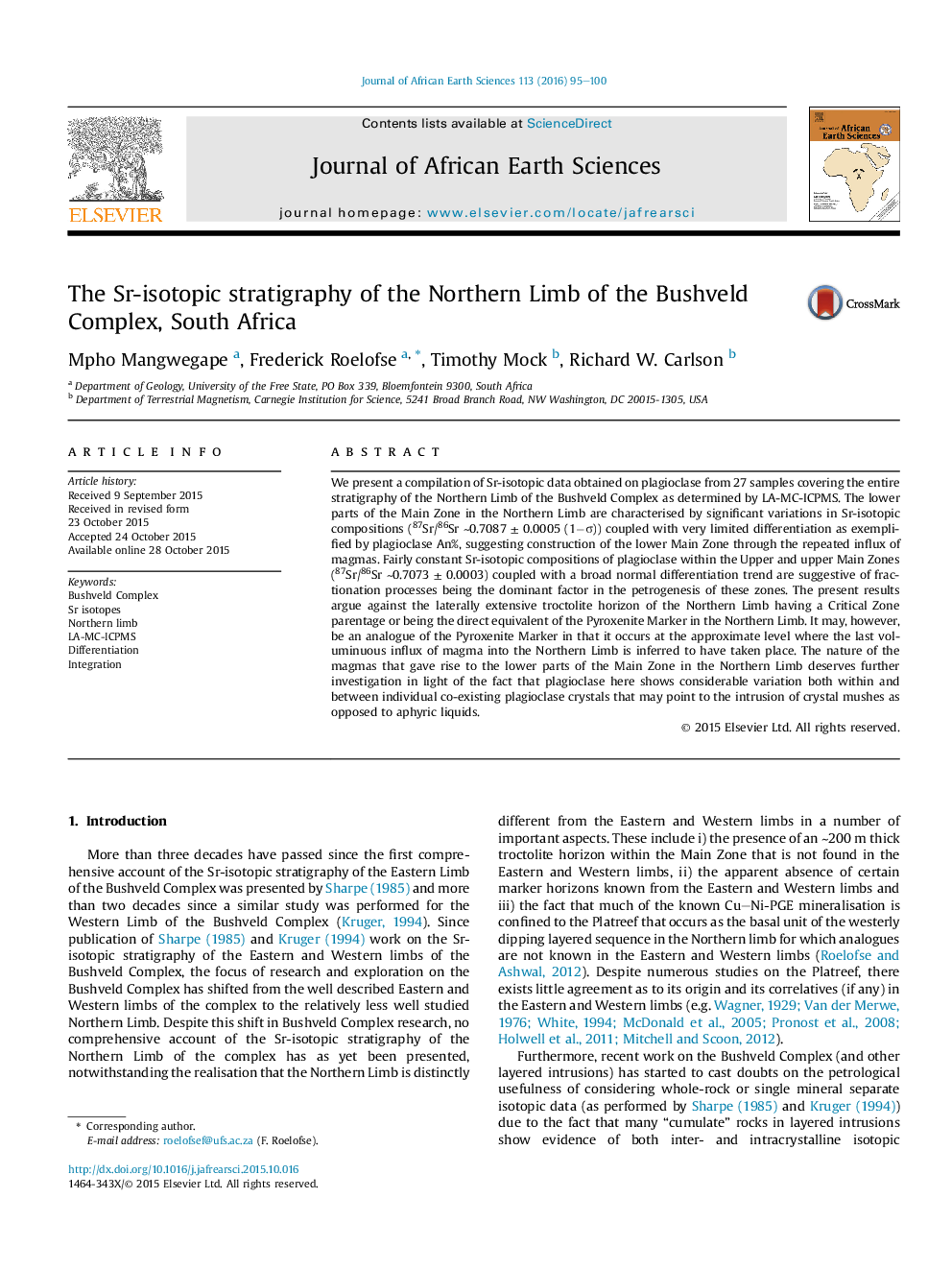| Article ID | Journal | Published Year | Pages | File Type |
|---|---|---|---|---|
| 4728274 | Journal of African Earth Sciences | 2016 | 6 Pages |
•The lower main zone is the product of repeated magma influxes into the Northern Limb.•The upper main zone and upper zones represent the products of differentiation within the Northern Limb.•Troctolite horizon may represent level at which last voluminuous magma addition to the Northern Limb took place.•The troctolite horizon cannot be directly equated with the Pyroxenite Marker on Sr-isotopic grounds.•Inter- and intracrystalline variations in Sr-isotopic composition in lower Main Zone may be suggestive of mush intrusion.
We present a compilation of Sr-isotopic data obtained on plagioclase from 27 samples covering the entire stratigraphy of the Northern Limb of the Bushveld Complex as determined by LA-MC-ICPMS. The lower parts of the Main Zone in the Northern Limb are characterised by significant variations in Sr-isotopic compositions (87Sr/86Sr ∼0.7087 ± 0.0005 (1−σ)) coupled with very limited differentiation as exemplified by plagioclase An%, suggesting construction of the lower Main Zone through the repeated influx of magmas. Fairly constant Sr-isotopic compositions of plagioclase within the Upper and upper Main Zones (87Sr/86Sr ∼0.7073 ± 0.0003) coupled with a broad normal differentiation trend are suggestive of fractionation processes being the dominant factor in the petrogenesis of these zones. The present results argue against the laterally extensive troctolite horizon of the Northern Limb having a Critical Zone parentage or being the direct equivalent of the Pyroxenite Marker in the Northern Limb. It may, however, be an analogue of the Pyroxenite Marker in that it occurs at the approximate level where the last voluminuous influx of magma into the Northern Limb is inferred to have taken place. The nature of the magmas that gave rise to the lower parts of the Main Zone in the Northern Limb deserves further investigation in light of the fact that plagioclase here shows considerable variation both within and between individual co-existing plagioclase crystals that may point to the intrusion of crystal mushes as opposed to aphyric liquids.
